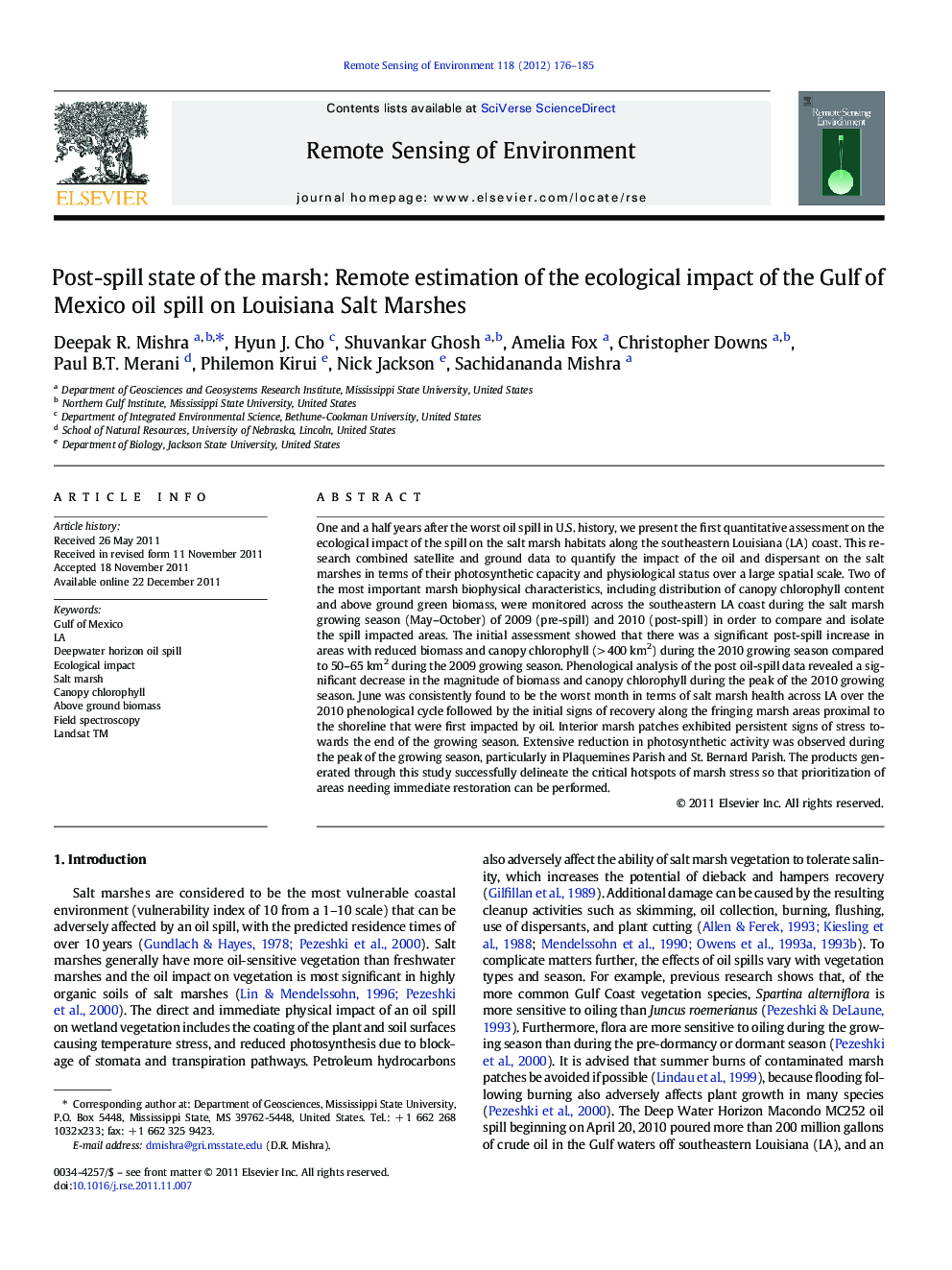| Article ID | Journal | Published Year | Pages | File Type |
|---|---|---|---|---|
| 4459337 | Remote Sensing of Environment | 2012 | 10 Pages |
One and a half years after the worst oil spill in U.S. history, we present the first quantitative assessment on the ecological impact of the spill on the salt marsh habitats along the southeastern Louisiana (LA) coast. This research combined satellite and ground data to quantify the impact of the oil and dispersant on the salt marshes in terms of their photosynthetic capacity and physiological status over a large spatial scale. Two of the most important marsh biophysical characteristics, including distribution of canopy chlorophyll content and above ground green biomass, were monitored across the southeastern LA coast during the salt marsh growing season (May–October) of 2009 (pre-spill) and 2010 (post-spill) in order to compare and isolate the spill impacted areas. The initial assessment showed that there was a significant post-spill increase in areas with reduced biomass and canopy chlorophyll (> 400 km2) during the 2010 growing season compared to 50–65 km2 during the 2009 growing season. Phenological analysis of the post oil-spill data revealed a significant decrease in the magnitude of biomass and canopy chlorophyll during the peak of the 2010 growing season. June was consistently found to be the worst month in terms of salt marsh health across LA over the 2010 phenological cycle followed by the initial signs of recovery along the fringing marsh areas proximal to the shoreline that were first impacted by oil. Interior marsh patches exhibited persistent signs of stress towards the end of the growing season. Extensive reduction in photosynthetic activity was observed during the peak of the growing season, particularly in Plaquemines Parish and St. Bernard Parish. The products generated through this study successfully delineate the critical hotspots of marsh stress so that prioritization of areas needing immediate restoration can be performed.
► This unprecedented research combined satellite and ground data to quantify the impacts of oil-spill and dispersant on Louisiana wetlands. ► Phenological analysis pre- and post oil-spill revealed a significant decrease in biomass and canopy-chlorophyll during the 2010 growing season. ► Products generated through this research successfully delineate the hotspots of marsh stress because of the Gulf of Mexico oil-spill.
